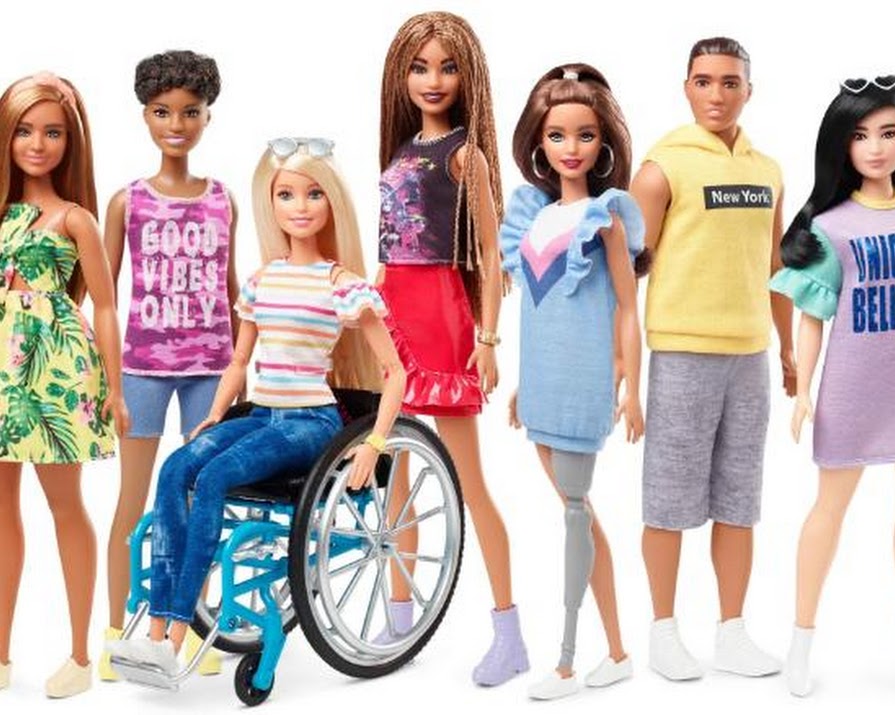
By Jennifer McShane
12th Feb 2019
12th Feb 2019
When Barbie was first created, she was a model-thin blonde with a waist so tiny that her proportions couldn’t exist in real life. She wasn’t a role model; she was one-dimensional, representing a female stereotype who loved nothing more than shopping. It didn’t stop me (and millions of other young girls) from developing a barbie obsession. Make-up Barbie, Baywatch Barbie (I know), I had them all and the loss of her tiny shoes was a constant source of strife in my young life.
But faced with changes in beauty ideals, shifting demographics and ongoing criticism of Barbie’s impossible proportions, Mattel decided to remake the iconic blonde, and they have been trying hard in recent years. Barbie’s body type has been re-created to reflect the image of real-life girls.
You can buy her in four body types: the original, plus tall, curvy, and petite. They also feature seven skin tones, 22 eye colours, 30 hair colours, 24 hairstyles, and 14 face sculpts.
Related: ‘I remember hearing the words “she’s disabled” and wondering who they were talking about’
I never had a doll that reflected my disability or the fact that I often used a wheelchair – and I’ll be honest in saying I didn’t expect a barbie to bridge that gap. However, now, you will soon be able to buy a wheelchair-using doll and a doll with a removable prosthetic leg.
View this post on Instagram
The wheelchair itself was designed in collaboration with a specialist team at the University of California and can be used by any doll within the Made To Move range, while the prosthetic limb was created with the help of a 12-year-old girl, Jordan Reeves, who has a prosthetic arm.
Related: Barbie Launches a New Line of Dolls in Honour of International Women’s Day
“As a brand, we can elevate the conversation around physical disabilities by including them into our fashion doll line to further showcase a multi-dimensional view of beauty and fashion,” the company said in a statement.
“We’re going to be introducing a doll in a wheelchair and a doll representing physical disabilities. She has a prosthetic limb,” Kim Culmone, Mattel’s vice president of Barbie Design told Teen Vogue, adding that the changes were as a result of consumer demand.
Related: Accepting my disability and accepting being disabled
Barbie will also go through new changes, including a more realistic waist size.

“[There will be] additional body sizes — a Barbie with a smaller bust and less-defined waist. A wheelchair or doll in a wheelchair was one of the most requested items through our consumer … hotline. It’s important for us to listen to our consumers.”
When Reeves mentioned that the prosthetic limb should be removable, Culmone said it was one of their “first big ahas”.
“That’s not necessarily something we would have realised how important it would be to someone living with this experience,” he explains.
This is a very small step in terms of representing those with disabilities, but it’s a very important one. What we need to see now is this being elevated to become the norm, as opposed to something considered a rarity.
Main image via Barbie Instagram























